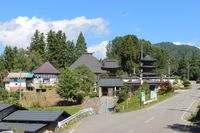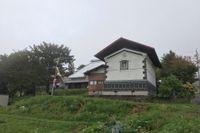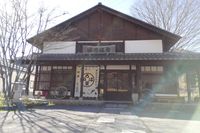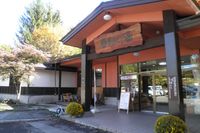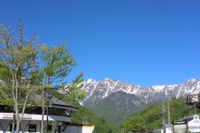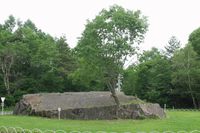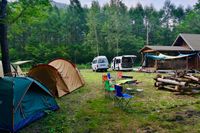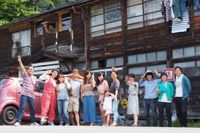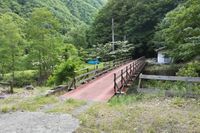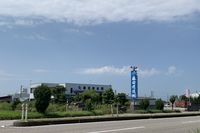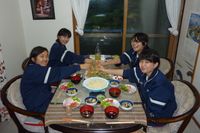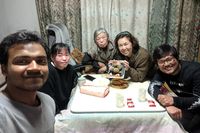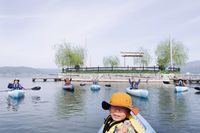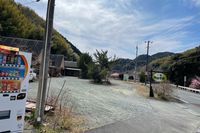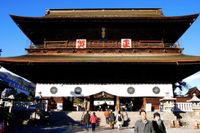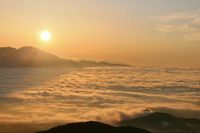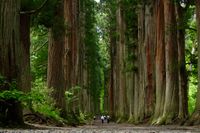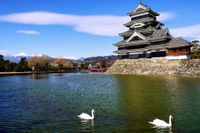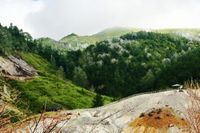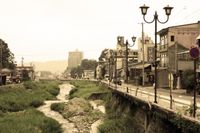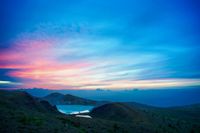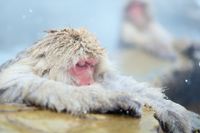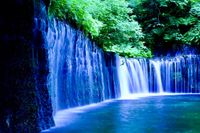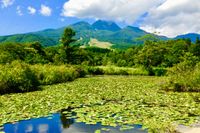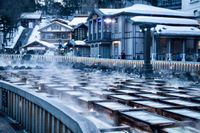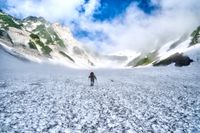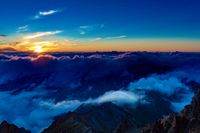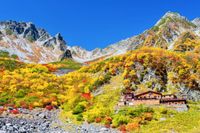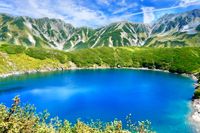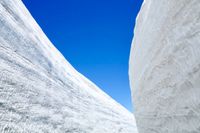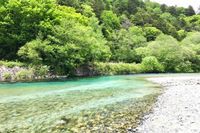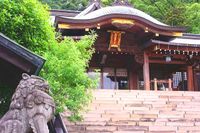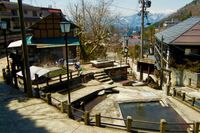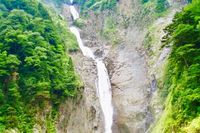Togurakami Yamada Onsen
長野県/千曲市

Description
This is an Onsen located on the river bed of Chikuma River. It opened during the Meiji era(1858-1912), and was known as a place of devotion towards the Zenkoji Temple, as well as a place of healing for wounded and sick soldiers during the war. A total of 150 geisha registered to this onsen, and also has the unique characteristic of being an onsen constructed on a base of a shooting range.
Homepage
Address
Nearby Car Night Spots
Omachi Hot Spring "Yukemuri Estate: Yakushi no Yu"
¥500〜
/ per nightNagano Ken Taira, Omachi Shi
4.1
(27)A luxurious Niigami Pass camping car spot where you can occupy a 500 tsubo lot by yourself
¥150,000〜
/ per night群馬県 吾妻郡長野原町北軽井沢
5.0
(2)Nearby Activities
【Only Foriegn Visitors】 International exchange with handmade udon!
¥5,000〜
/ per personNagano Prefecture Shinonoi Utabi, Nagano City
3.0
(0)【Only foreigners】 Experience local life in Nagano
¥5,000〜
/ per personNagano Takehusa, Shinshu-shinmachi, Nagano city,
3.0
(0)【Only Foreign Visitors】Takoyaki Party with Locals
¥5,000〜
/ per personNagano Prefecture Wakaho Kawada, Nagano City
3.0
(0)【Only Foreign Visitors】International Exchange with Takoyaki and Okonomiyaki
¥5,000〜
/ per personNagano Prefecture Wakasato, Nagano City
3.0
(0)【Only Foreign Visitors】Local Meetup in Nagano City
¥5,000〜
/ per personNagano Prefecture Hirabayashi, Nagano City
3.0
(0)【Only Foreign Visitors】Original Miso Ramen Party
¥5,000〜
/ per personNagano Prefecture Minowa, Nagano City
3.0
(0)Ranking Stations
(Bonfire BBQ) Chita Mihama Noma Beach Station
¥3,500〜
/ per nightAichi Noma, Mihamacho, Chita County
4.7
(42)Vanlife BASE | 45 min. from Narita Airport / Perfect for campervan travel/A seaside town rich in nature/Japanese countryside town/welcome traveler
¥7,000〜
/ per nightChiba Koseki, Kujukuri-machi, Sambu-gun
5.0
(61)Shin Meishin Suzuka PA (inbound) RV Station Suzuka * With Power!
¥2,200〜
/ per nightMie Yamamotocho, Suzuka-shi
4.3
(156)Nearby Drive Spots
Zenkoji Temple
This is a non-sectarian temple that was built in 644 AD. The temple was built to revere the oldest Buddha known as Ikko Sanzon Amida Nyorai, and numerous priests and monks visited this temple, including Shinran and Ippen. It was the scene of the battle between the warriors Takeda Shingen and Uesugi Kenshin, but its restoration was ordered by Tokugawa Ieyasu, and is known even today as a famous place where all should visit at least once in their lifetime.
Utsukushigahara Highlands
This is a plateau situated in central Nagano, with an altitude of 2,000 meters. Beyond the Venus line highway renowned for its views, this hidden area awaits. Here visitors can see a 360 degree panoramic view of the northern and southern alps, Sengen mountain, and Mount Fuji. The area is an ideal photo spot for its otherworldly starscapes above and cloud scapes below.
Togakushi Shrine
This is a shrine built in 210 BC. The shrine's God is known as Amenodajikarao no Mikoto and was built by the 5 enterprises known as Rear shrineMiddle ShrineHokoshaNine Headed Dragon ShrineHinomiko Shrine at the foot of Holly Togakushi Mountain. The area was often used as a place to practice the Shugendo (a religion which was a fusion of several different religions) and was also known as the "three mountains of the Sanzenbou area" as the third mountain along with Mount Hiei and Mount Takao. Although it has been the scene of numerous battles along with Zenkoji Temple, it came under the fierce protection of Tokugawa Ieyasu and is still strictly protected today.
Matsumoto Castle
This is a castle build by Ogasawara clan in 1504. It is famous as one of Japan's only 12 castle towers and is one of 5 which has been designated as a national treasure by the Japanese government. The castle was taken into ownership by Ishikawa Kagumasa in 1590, and it is said that he painted the castle jet black to express loyalty to the castle lord, and became famously known as the "Crow castle".
Manza Onsen
An Onsen located on Kusatsu Shirane Volcano at an altitude of 1,800m, the highest in Japan. There are several areas where hot water spouts up, almost like a geyser, creating an almost hellish looking landscape with a smell of sulphur. The area is also popular in winter for skiing.
Shibu Onsen
This is an old Onsen along the Yokoyu River. It boasts a 1300 year history, and was a secret bathing spot for Takeda Shingen during the Sengoku era(1467-1600). It was also a place of healing for soldiers during the battle of Kawanakajima. For guests staying at the Shibu Onsen, a key is provided to the outdoor spring baths where are 9 baths said to wash away pain and struggle. (The Japanese number 9 is "ku" which is the same sound as the first character of "pain/struggle" - "kurou")
Yugama Crater Lake
This is a crater lake in Kusatsu Mount Shirane, one of the most active volcanoes in Kanto. Due to the iron and sulphur that is melted in the water, the color is a turgid blue green, giving the impression of viewing a lake not of this world.
Jigokudani Yaen Koen
This is a monkey park in the "Hell valley" hot spring area. The park was opened in 1964 to conserve the monkeys that inhabited the area due to them being close to extinction. There are now around 150 monkeys that inhabit the area. The monkeys that appear in the onsen area in winter are known as "Snow monkeys" and is one of the most famous onsen destinations in the world.
Shiraito Falls
This is a waterfall situated in Karuizawa. As water spouts up through the rocks, this waterfall looks attractive in all types of weather. The name derives from the fact that the water flowing down looks like white and silken threads.
Lake Imori
This is a pond within Myokokogen pond with a length of around 500m. The name originates from the fact that newts(Imori) used to live here in great number. On a clear date, the 2,454m high Mount Myoko is reflected clearly in the pond water.
Kusatsu Onsen
This is a famous onsen located at the foot of Kusatsu Shirane Volcano. It was named as one of the top Onsens in the country during the Edo period(1603-1868). The onsen is special for its large amount of natural water and is often used for research on "Yumomi", which is a process of inserting a hexagonal plate to reduce the feeling of heat when initially entering a warm bath.
Hakuba Daisekkei
This is one of Japan's three large snowy mountains with a length of 3.5km and altitude of 600 meters, situated in Hakuba village. The valley is formed from the peaks of Hakuba and Suko, and as there is a walking route of about one hour from Sarukura to the snowy mountain area, it is an ideal hiking course.
Mount Yarigatake
Located at the southern part of the Hida mountain range, this is Japan's 5th tallest mountain at 3,180 meters. As the name suggests, the mountain has an unusual shape resembling a spear that is being cast to heaven. This has earned it the nickname of "Japan's matterhorn". The sunrise and sunset views with the sea of clouds below captures the hearts of many climbers.
Karasawa Curl
This is the largest glacier valley in Japan at the southern part of the Hida mountain range. There is a stunning view between Mount Okuhogatake and Mount Maehogatake due to their height difference of about 1,000 meters. The area has become popular for autumn leaf viewing in recent years, and the trees, known for their "three stage" autumn leaves offer an interesting contrast to the surrounding rocky area.
Mikurigaike Pond
This is a crater lake at altitude 2,405 meters formed by the volcanic activity of Tateyama volcano, in Murodo-daira. In Tateyama faith, the name has the meaning of "God's kitchen" and the pond's water ownership was bequeathed to Tateyama. For those practicing religion in this area, it became known as holy water.
Yuki no Otani
This is an Alpine route of the Tateyama Kurobe mountain range. As snow has to be cleared aside in the heavy mountain zone of Toyama in around March, visitors can see the spectacular snow walls in April and May, with a height of 15-20m.
Kamikochi
This is a scenic spot with an altitude of 1500 m in the southern part of the Hida Mountain Range. It has many sightseeing spots such as Azusa RiverKappa BridgeMyojin PondTakesawa WetlandsTashiro Pond. As there are only a few such plains spread out in Japan to this extent, many tourists flock to this area to see the rare scenery. The area is also the habitat of the Japanese monkey, Char Fish, and Genji firefly.
Suwa Taisha Shrine
This is a traditional shrine whose construction date is unknown. It houses two Gods known as Takeminakata no Kami and Yasakatome no Kami and 25,000 companies in Japan are associated with the shrine. It has been long known and revered as a war shrine, and where Sakanoue no Tamuramaro prayed for victory during the conquering of Ezo district. There are four halls which are separated by Lake Suwa, with the upper area of Honmiya and Maemiya on one side, and Akimiya and Harumiya on the other.
Nozawa Onsen
This is an old Onsen in Mount Kenashi, in northern Nagano prefecture. It has 1,300 years of history, and there are 13 outdoor baths. The onsen is popular as a place to mingle with the locals. On the slope, there is a ski area (the Nozawa ski area) which makes the area popular for skiing in the winter. The area is also famous for its Nozawa pickles.
Shomyo Falls
This is Japan's tallest waterfall at 350m, in the Tateyama mountain range. The name comes from the fact that a Priest named Hounen heard the voice that called "Shomyo Nenbutsu " from the sound of the waterfall.

